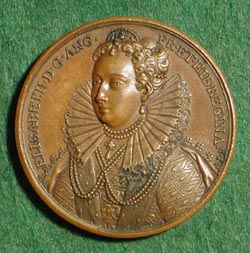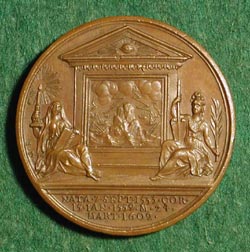

|
ELIZABETH I |
|
|
Elisabeth I (1533-1603), Queen of England (1558-1603), was the daughter of the Tudor king Henry VIII and his second wife Anne Boleyn. During the reigns of her half-brother Edward VI and half-sister Mary I, she avoided political disputes, but once crowned she reestablished Protestantism and became the supreme governor of the church. As a result, in 1570, Pope Pius V excommunicated Elisabeth and absolved her subjects from any oath of allegiance that they might have taken to her. Various plots to murder Elizabeth and place her cousin, the Catholic Mary, Queen of Scots, on the throne resulted in Mary’s imprisonment and execution in 1587 at Fotheringhay Castle and the initiation of repressive legislation against Catholics. For most of her reign England was at peace, and commerce and industry prospered. Elizabethan drama reflected this ‘golden age". The expansion of the navy laid the foundations for the development of the first British Empire and the defeat of the Spanish Armada in 1588. Despite pressure to marry and produce an heir, Elizabeth remained a spinster. Her favorites included Robert Dudley, Early of Leicester, and Robert Devereux. 2nd Earl of Essex, who was later executed for leading a rebellion against her. Elizabeth was the last of the Tudor line, and the throne passed to James I, a Stuart. (O’Brien) The source of the image of Elizabeth on the obverse of this medal has been variously attributed to a miniature by Isaac Oliver (M.I.) or to the engraving by George Vertue (Eisler). |
|